This article was co-authored by wikiHow Staff. Our trained team of editors and researchers validate articles for accuracy and comprehensiveness. wikiHow's Content Management Team carefully monitors the work from our editorial staff to ensure that each article is backed by trusted research and meets our high quality standards.
There are 13 references cited in this article, which can be found at the bottom of the page.
wikiHow marks an article as reader-approved once it receives enough positive feedback. In this case, 90% of readers who voted found the article helpful, earning it our reader-approved status.
This article has been viewed 25,601 times.
Learn more...
It can be really frustrating to deal with leg ulcers. Fortunately, there are many easy ways to help an ulcer heal. The most common cause of leg ulcers is the poor circulation of blood. So, the best way to heal a leg ulcer is to improve blood circulation. Before starting any self-treatment, however, it is important to first determine whether the ulcer is caused by problems with your veins or arteries, because treatments for the 2 types of ulcers are different. After that, there are a number of things you can do to help your leg ulcer heal naturally.[1]
Steps
Treating the Ulcer Medically
-
1Visit your doctor to get information about your ulcer. Treatment for an ulcer depends on whether it is an arterial ulcer (caused by problems with arteries) or a venous ulcer (caused by problems with veins). Treating an arterial ulcer is often a matter of urgency. So it is important to first call your doctor and get their professional advice before trying to heal an ulcer on your own.[2]
-
2Consider surgery to treat an arterial leg ulcer. A blocked or narrowed artery is the most common cause of an arterial leg ulcer. This blockage reduces the amount of blood that can flow to tissue in your leg. Poor blood flow can deprive the tissue of oxygen and nutrients, possibly leading to the death of the tissue. For this reason, treating an arterial leg ulcer is an urgent matter.[5]
- Your doctor may refer you to a vascular surgeon who may perform surgery either to clear out the blocked artery (angioplasty) or to add a new route for blood to flow along and bypass the blockage.
- While your external wound may heal in as little as 2 weeks after the surgery, it may take several months for the underlying tissues to fully heal.[6]
Advertisement -
3Clean and dress a leg ulcer with the help of medical professionals. When you visit a hospital or clinic, the first thing your doctor or nurse will do will be to clean dead tissue and debris from a leg ulcer. They’ll then use a dressing to dress the ulcer. Cleaning and dressing the ulcer once a week will help the ulcer heal naturally.[7]
- You should clean and dress the ulcer under the supervision of a medical professional.
- Most venous ulcers heal in 3-4 months, but some need more time. Be patient and follow the advice of your doctor.[8]
-
4Wear a compression bandage for a venous leg ulcer. A compression bandage will help reduce swelling and improve blood circulation in your leg, helping blood flow back up to the heart. A compression bandage will also help treat swelling. These bandages are typically changed once a week, and should be worn every day, exactly as instructed by your doctor.[9]
- Only a trained healthcare professional can apply a compression bandage properly, so follow the treatment regimen recommended by your doctor.
- Some medical professionals will use compression stockings and other compressive devices instead of compression bandages, but these work in the same way.[10]
- Compression treatment cannot be used to treat arterial ulcers because it would reduce rather than increase blood supply to the leg.[11]
Helping the Ulcer Heal
-
1Walk regularly to help your leg ulcer heal more quickly. Sitting for long periods of time can make swelling around your leg ulcer worse. So, keep active. Regular exercise is one of the best things you can do to improve blood circulation in your leg and help your leg ulcer heal naturally. Just adding walks into your daily routine will do a lot of good for your ulcer.[12]
- A daily 30-minute walk will help reduce swelling and improve blood flow in your leg.
- Be sure to wear comfortable shoes and socks that don’t aggravate your leg ulcer.
-
2Elevate your leg when you sit or lie down to ease the swelling of a venous ulcer. Whenever you sit down, elevate your legs to keep blood in your leg from pooling. When you elevate your affected leg, make it so that your toes are level with your eyes.[13]
- You can use a sofa cushion, pillows, a suitcase, or a foam wedge to keep your legs raised.
- Put one of the above items under your mattress, so that your legs will be elevated when you sleep during the night.
- Elevate your feet for at least a few minutes every hour.
- Keep your legs hanging down if you have an arterial leg ulcer.
-
3Exercise your legs regularly to encourage better circulation. Another thing you should do when you’re sitting down is move your legs and feet around. To do this, move your feet up and down, and rotate your ankles.[14]
- You should move your legs around whenever you’re sitting for a prolonged period. Moving them for a few minutes once an hour is a good rule of thumb.
-
4Eat a healthy diet. Your daily diet should include a variety of fruits and vegetables, starchy carbohydrates, proteins, dairy, and oil. Eating a balanced diet is important to get your body all the nutrients it needs to stay healthy.[15]
- Losing weight can also help prevent and heal ulcers.[16]
-
5Stop smoking to keep your blood vessels open. Tobacco has the side effect of constricting vessels of the circulatory system. To heal a venous leg ulcer naturally, the most important thing you can do is to help keep these vessels as wide open as possible.[17]
- You should also consider moderating your consumption of alcohol.
- Cognitive Behavioral Therapy may help you quit smoking naturally. A therapist can help you change your thinking about smoking and can give you a set of skills to cope with the difficult process.[18]
-
6Protect your affected leg from further injury. Wear comfortable and well-fitting footwear to avoid aggravating your ulcer. Avoid scratching your legs, since doing so can damage the skin and cause new ulcers.[19]
- Many people with venous leg ulcers experience rashes and itchy skin. Varicose eczema is often the cause.
- Keep your skin well moisturized with a moisturizing lotion.
When to Seek Medical Care
-
1See your doctor if you have a leg sore that doesn’t heal in 2-3 weeks. Most wounds heal or improve on their own within a few weeks. If you have a sore on your leg that doesn’t show signs of healing in that time, call your doctor. They can determine what type of ulcer you have and what might be causing it.[20]
- Other symptoms of leg ulcers include itching, redness, swelling, and fluid leaking from the wound.
- The affected leg may also feel heavy, achy, or tight.
-
2Get medical attention if your symptoms get worse. If your ulcer isn’t healing even with medical care, or if you notice your symptoms changing or getting worse, call your doctor right away. You may have a secondary infection in the wound, and you’ll probably need to treat it with medication. Common signs of infection include:[21]
- Worsening redness, swelling, pain, or warmth around the wound
- Pus, blood, or yellowish or cloudy fluid coming from the wound
- A bad odor
- Fever, chills, or a general feeling of being unwell
-
3Work with your doctor to manage any underlying conditions. Treating the condition that’s causing your ulcer may help it heal better or prevent new ulcers from forming. Talk to your doctor about how to manage any medical issues you have that could be causing your ulcer.[22]
- You may be at risk of developing leg ulcers if you have an arterial disease (such as peripheral artery disease), diabetes, or arthritis.
- Some medications can also put you at risk. If your doctor thinks your medication is causing your ulcers, talk to them about adjusting your dose or taking other measures to reduce unwanted side effects.
References
- ↑ https://www.vascularsociety.org.uk/patients/conditions/4/leg_ulcers
- ↑ https://www.betterhealth.vic.gov.au/health/ConditionsAndTreatments/leg-ulcers
- ↑ https://www.betterhealth.vic.gov.au/health/ConditionsAndTreatments/leg-ulcers
- ↑ https://www.hopkinsmedicine.org/health/conditions-and-diseases/venous-ulcers
- ↑ https://www.betterhealth.vic.gov.au/health/ConditionsAndTreatments/leg-ulcers
- ↑ https://myhealth.alberta.ca/Health/aftercareinformation/pages/conditions.aspx?hwid=abk2359
- ↑ https://www.hopkinsmedicine.org/health/conditions-and-diseases/venous-ulcers
- ↑ http://www.circulationfoundation.org.uk/help-advice/veins/leg-ulcers
- ↑ https://www.hopkinsmedicine.org/health/conditions-and-diseases/venous-ulcers
- ↑ https://www.nhsinform.scot/illnesses-and-conditions/skin-hair-and-nails/venous-leg-ulcer#treating-venous-leg-ulcers
- ↑ https://pubmed.ncbi.nlm.nih.gov/23152202/
- ↑ https://www.magonlinelibrary.com/doi/abs/10.12968/jowc.2012.21.9.421
- ↑ https://www.nhsinform.scot/illnesses-and-conditions/skin-hair-and-nails/venous-leg-ulcer#treating-venous-leg-ulcers
- ↑ https://www.nhsinform.scot/illnesses-and-conditions/skin-hair-and-nails/venous-leg-ulcer#treating-venous-leg-ulcers
- ↑ https://www.nhsinform.scot/healthy-living/food-and-nutrition/eating-well/eatwell-guide-how-to-eat-a-healthy-balanced-diet#overview
- ↑ https://medlineplus.gov/ency/patientinstructions/000744.htm
- ↑ https://www.betterhealth.vic.gov.au/health/ConditionsAndTreatments/leg-ulcers
- ↑ https://www.apa.org/monitor/2008/11/smokers-quit
- ↑ https://www.nhsinform.scot/illnesses-and-conditions/skin-hair-and-nails/venous-leg-ulcer#treating-venous-leg-ulcers
- ↑ https://health.clevelandclinic.org/leg-sores-wont-heal-whats-causing-your-venous-leg-ulcers/
- ↑ https://medlineplus.gov/ency/patientinstructions/000744.htm
- ↑ https://www.betterhealth.vic.gov.au/health/ConditionsAndTreatments/leg-ulcers
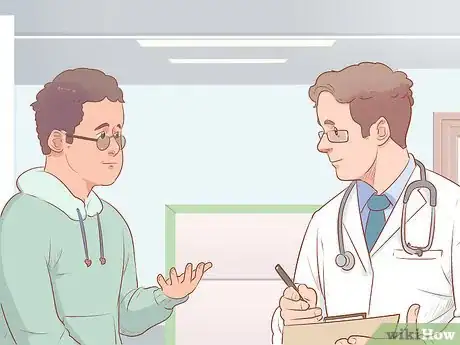

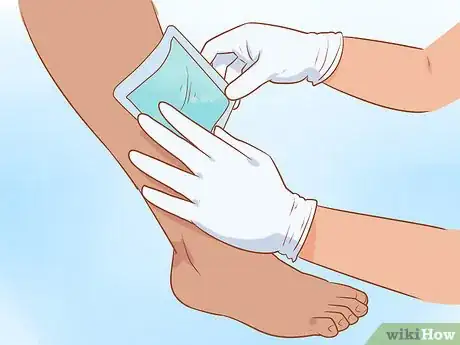
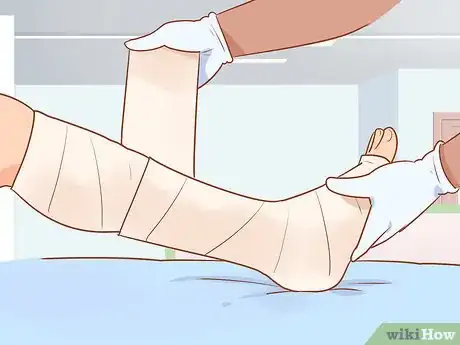

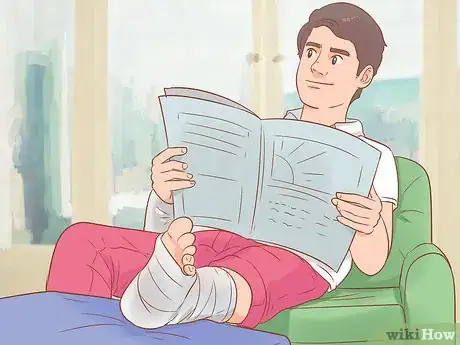





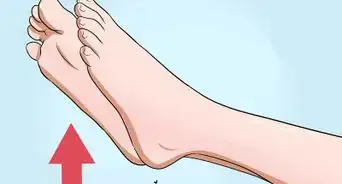




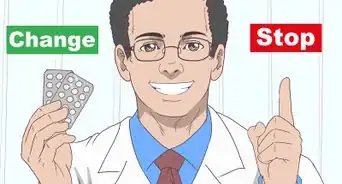

















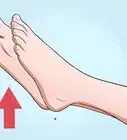





































Medical Disclaimer
The content of this article is not intended to be a substitute for professional medical advice, examination, diagnosis, or treatment. You should always contact your doctor or other qualified healthcare professional before starting, changing, or stopping any kind of health treatment.
Read More...